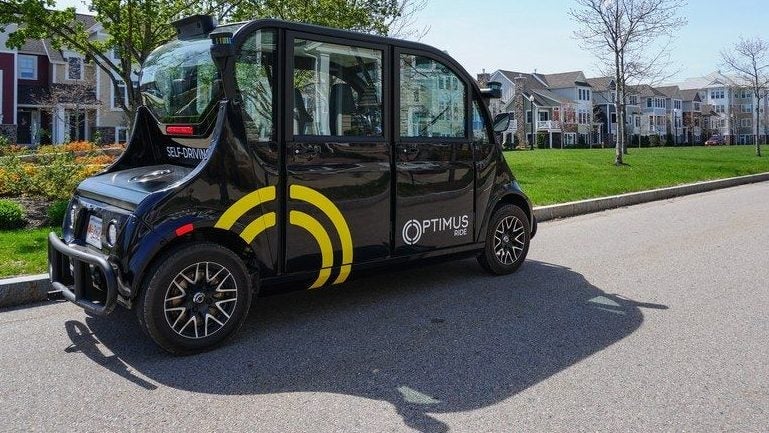The fast lane for self-driving cars runs through 35 mph retirement communities
Drive into The Villages Golf & Country Club, a senior community near San Jose, California, and you’ll glimpse the future. Riding along its miles of private roadways, residents are picked up and dropped off in self-driving minivans summoned with an app.


Drive into The Villages Golf & Country Club, a senior community near San Jose, California, and you’ll glimpse the future. Riding along its miles of private roadways, residents are picked up and dropped off in self-driving minivans summoned with an app.
The Silicon Valley startup Voyage, which operates the service, aims to deliver fully autonomous taxis in private settings across the country in the coming years. By operating in controlled environments, Voyage thinks it can beat tech giants such as Uber or Alphabet’s Waymo to giving customers self-driving vehicles.
Most of what we call self-driving systems on road now—Tesla’s Autopilot, General Motor’s SuperCruise, Audi’s Traffic Jam Pilot—are nothing of the sort. Autopilot, for example, is actually a driver-assist system classified as Level II autonomous under the US government’s categorization system. Such systems are designed to operate under limited conditions and are intended to increase the safety of (mostly) highway driving to support fully engaged drivers (although not everyone uses them this way).
The most ambitious systems, such as self-driving fleets of Chrysler Pacifica minivans, Volvo SUVs and Chevy Bolts, are probably years away from a safe solution for public roads, as illustrated by the fatal collision in Arizona in which an Uber autonomous vehicle with a safety driver hit a woman crossing the street.
A more supportive learning environment
The challenge for manufacturers comes in accounting for a bewildering array of driving conditions while avoiding potentially lethal consequences. Companies are dedicating billions of dollars in sensors, computing power and algorithms to the problem. They remain years away from a fool-proof vehicle.
A second strategy is to simplify the world. Startups such as Optimus Ride, May Mobility and Voyage are choosing to operate first in retirement communities and other geographically confined, managed environments. These places tend to restrict speeds, often below 35 mph, so vehicles have more time to identify situations and react. In fully mapped areas, the risk of unexpected accidents or confusion can be reduced. Startups may also negotiate directly with a single entity to roll out a system across a community and collect valuable feedback along the way.
This approach also simplifies the business model, Tom Hauburger, head of product at Voyage, said in an interview at The Information’s Autonomous Vehicles Summit last month. Eventually, Voyage hopes to become the ubiquitous transportation solution for entire communities, not dissimilar to Uber’s mission to make transportation a service as easy to use as running water. Waste removal, package delivery, security, and medical transport are all possible use cases.
Voyage plans to start operation next in The Villages, the retirement community in central Florida with about 125,000 residents and 750 miles of private roads that shares the same name as the San Jose development. Voyage has converted a number of Pacifica minivans into robo-taxis, installing sensor arrays with 3D-printed plastic housings on their roofs and front grilles. Voyage says its operations in Florida will be the largest deployment by area of self-driving cars in the world.
Forging ahead at a brisk 15 mph
Optimus Ride is building its own vehicles for university and corporate campuses. It has a dozen or so communities signed up, said Ryan Chin, co-founder and CEO at Optimus Ride. Its most public project is Union Point in South Weymouth, Massachusetts, a master-planned community rising 12 miles from Boston. Chin says the company is offering hundreds of rides per week in the town, which has a speed limit of 15 mph.
The product, ultimately, is not the car. It’s an algorithm that delivers safe and smooth transportation (Chin calls it “mobility as a service”). Most companies building their own autonomous vehicles are doing so because the technology for them hasn’t been standardized yet. Once self-driving cars enter mass production, companies will then need to differentiate themselves by producing fully capable autonomous cars, something no one has achieved yet.
“The biggest secret in the industry is that no one has solved the software problem,” says Hauburger. “One of the reasons we think we can get there [full-autonomy] in a similar time frame as Waymo is because of simplification of the engineering problem.”
That may give startups up the edge—and retirees an early ticket to the future.